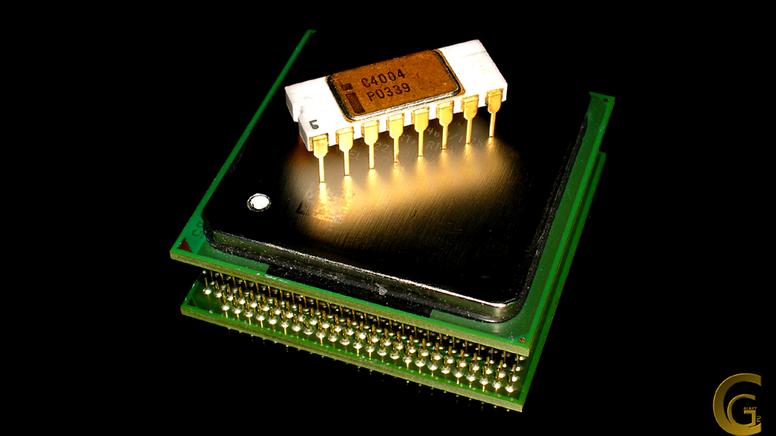


 |
Busicom actually owned the design of the 4004 and had exclusive rights to its use, but eventually agreed to let Intel sell the chip commercially — and thus the fateful appearance of that 1971 Electronic News ad. Despite the 4004′s success — and the popularity of its 8-bit successors, 8008 and 8080 — Intel was still very much a DRAM and SRAM company at the time. It wasn’t until the late ’70s with the 8088, which powered the IBM PC and its clones, that Intel decided to make the shift towards microprocessors, and as we now know, the rest is history. |





 |
Future microprocessors developed on Intel’s next-generation 22nm manufacturing process are due in systems starting next year and will deliver even more energy-efficient performance as a result of the company’s 3-D Tri-Gate transistors that make use of a new transistor structure. "The sheer number of advances in the next 40 years will equal or surpass all of the innovative activity that has taken place over the last 10,000 years of human history.”
Tri-Gate transistor is operating with a smaller voltage to a lower level ofleakage so that the performance and efficiency is increased compared withcurrent transistor technology. Therefore, developers can be more flexible to choose the desired chip such as low power or high performance. According to Intel chips the performance 37% better than planar transistors used inIntel's 32nm today.
|
Google quantum computer leaves old-school supercomputers in the dust

A Google quantum computer has far outpaced ordinary computing technology, an achievement called quantum supremacy, that's an important milestone for a revolutionary way of processing data. Google disclosed the results in the journal Nature on Wednesday. The achievement came after more than a decade of work at Google, including the use of its own quantum computing chip, called Sycamore.

"Our machine performed the target computation in 200 seconds, and from measurements in our experiment we determined that it would take the world's fastest supercomputer 10,000 years to produce a similar output," Google researchers said in a blog post about the work.

The news, which leaked into the limelight in September with a premature paper publication, offers evidence that quantum computers could break out of research labs and head toward mainstream computing. They could perform important work like creating new materials, designing new drugs at the molecular level, optimizing financial investments and speeding up delivery of packages. And the quantum computing achievement comes as progress with classical computers, as measured by the speed of general-purpose processors and charted by Moore's Law, has sputtered.

IBM challenges Google's quantum results
IBM is a major quantum computing fan, but it questioned Google's prematurely released results in a blog post Monday.
"We argue that an ideal simulation of the same task can be performed on a classical system in 2.5 days and with far greater fidelity," the IBM researchers wrote. They suggested different algorithms and a different classical computer design in a preprint paper of their own.
Google said it welcomes improvements to quantum computer simulation techniques but said its overall result is "prohibitively hard for even the world's fastest supercomputer, with more double exponential growth to come. We've already peeled away from classical computers, onto a totally different trajectory."

And you can try for yourself if you like. Google released its quantum computer's raw output to encourage others to see if they can do better at simulating a quantum computer. "We expect that lower simulation costs than reported here will eventually be achieved, but we also expect that they will be consistently outpaced by hardware improvements on larger quantum processors," the Google researchers said. Intel didn't offer an opinion on Google's results, but did say quantum supremacy is "a strategic benchmark."
"We are committed to moving quantum from the lab to commercialization," said Jim Clarke, Intel Labs' director of quantum hardware, in a statement.

